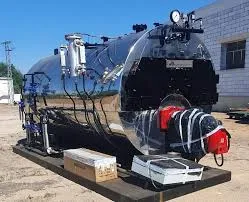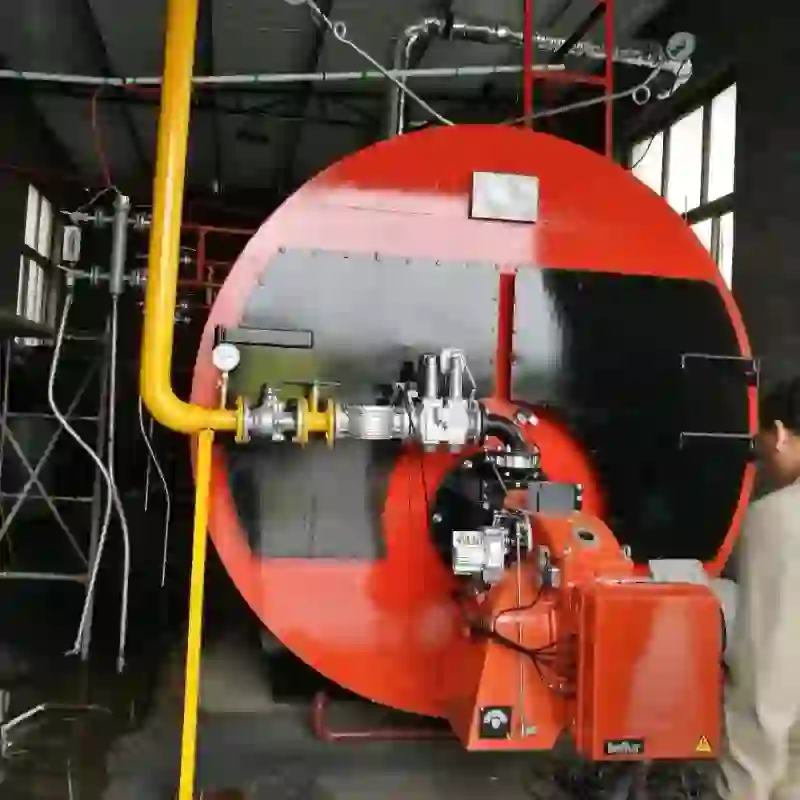
Jun . 08, 2025 01:02 Back to list
How Does a Hot Water Boiler Work? Efficient Heating Guide
- Exploring the Fundamentals of Boiler Operation
- Critical Components and Their Functions
- The Thermodynamics Behind Water Heating
- Technical Advantages of Modern Boiler Systems
- Market Comparison: Leading Boiler Manufacturers
- Customized Solutions for Different Environments
- Practical Knowledge: How Hot Water Boilers Benefit Homes

(how does a hot water boiler work)
Exploring the Fundamentals of Hot Water Boiler Operation
Modern hydronic heating systems remain marvels of thermal engineering, quietly operating behind walls to deliver consistent comfort. At their core, these appliances convert energy into controllable heat through combustion or electrical resistance. When functioning optimally, a sealed unit maintains water temperatures between 160-180°F (71-82°C) - the ideal range for radiators and underfloor systems. Combustion boilers ignite fuel (gas, oil, or propane) within an enclosed chamber, while heat exchangers transfer this thermal energy to water without contamination.
Operation initiates when thermostats detect temperature drops below setpoints. This triggers the control module to activate fuel valves, ignition systems, and circulation pumps. Unlike steam systems that require vaporization, hot water models operate at lower pressures between 12-25 psi. Closed-loop circulation ensures continuous movement through supply lines to heat emitters and back through returns. This constant flow prevents stagnation while minimizing energy waste, with modulating models adjusting output by precisely 10% increments to match demand.
Critical Components and Their Functions
Every boiler system relies on interconnected components performing specialized tasks:
- Heat Exchanger: Stainless steel or cast iron chambers where water absorbs combustion energy
- Gas Valve: Precisely meters fuel flow with ±2% accuracy for efficient burns
- Circulator Pump: Moves 5-20 gallons/minute depending on system size
- Expansion Tank: Absorbs pressure fluctuations from thermal expansion
- Aquastat: Monitors water temperature with thermistor sensors accurate to ±1°F
- Venting System: Concentric PVC pipes exhaust gases while drawing combustion air
These components create a coordinated system where, for example, pumps activate only after heat exchangers reach minimum operating temperatures. Manufacturers increasingly integrate learning algorithms that map household patterns, reducing cycling frequency by up to 40% compared to conventional models. Advanced ignition systems achieve 99.9% ignition reliability through iterative spark monitoring.
The Thermodynamics Behind Water Heating
Thermal transfer occurs in three distinct phases within properly functioning units. During the pre-purge cycle, exhaust fans clear residual gases for 15-30 seconds before ignition. Combustion then begins in sealed chambers where burners convert fuel to heat energy with up to 95% efficiency in condensing models. As flames contact heat exchanger surfaces, temperatures can briefly reach 3,500°F (1,927°C) before rapidly transferring to circulating water.
Critical to performance is delta-T management - maintaining 10-20°F temperature differentials between supply and return lines. Systems automatically modulate burner output to sustain this thermal gap, ensuring 20-40 gallons circulate through residential systems hourly. Condensing technology recovers latent heat from exhaust gases that conventional models waste, lowering flue temperatures from 450°F to approximately 130°F. This process releases condensation requiring specialized PVC venting and neutralization systems managing 1-3 gallons of mildly acidic effluent daily.
Technical Advantages of Modern Boiler Systems
Contemporary engineering delivers measurable benefits over older models:
- Modulating Burners: Adjust output from 20-100% capacity (vs. traditional on/off cycling)
- Stainless Steel Heat Exchangers: Resist chloride corrosion with 95% thermal transfer efficiency
- Variable-Speed Pumps: Reduce electrical consumption by 50-80% (approximately 45 watts vs. 220 watts)
- Weather Compensation: Automatically lowers water temperature during mild conditions
These innovations cumulatively enable seasonal efficiencies exceeding 90% AFUE (Annual Fuel Utilization Efficiency) compared to 70-80% for non-condensing units. Zoned heating capabilities create individual room temperature profiles with precision, lowering energy expenditure by 25-45%. Leak detection systems automatically shut down if pressure drops more than 4 psi below operating norms, preventing major water damage incidents.
| Manufacturer | Energy Star Rating | Warranty Period | Smart Integration | Annual Maintenance Cost |
|---|---|---|---|---|
| Viessmann Vitodens | 96% AFUE | 12 years | Modbus/BACnet | $145 |
| Weil-McLain ECO | 95% AFUE | 10 years | Proprietary App | $160 |
| Navien NCB-H | 94% AFUE | 15 years | WiFi/Nest | $180 |
| Rinnai i-Series | 92% AFUE | 12 years | Alexa/HomeKit | $175 |
Customized Solutions for Different Environments
Optimal configurations vary significantly by application parameters:
- Low-Temperature Radiant Systems: Require modulating condensing boilers maintaining 110-120°F outputs
- Combination Units: Provide space heating and domestic hot water at flow rates up to 9.5GPM
- Hydro-Coil Applications: Interface with existing ductwork using 85,000 BTU/h heat exchangers
Commercial applications require cascade systems with multiple units scaled to demand. Sequencing controllers stagger activation to match load requirements while balancing runtime across units. Hybrid solutions integrate boilers with solar thermal arrays in which stored excess heat supplements 30-60% of winter requirements. Buffer tanks of 30-80 gallon capacity compensate for mismatched heating output and distribution demands in zoned applications.
Practical Knowledge: How Hot Water Boilers Benefit Homes
Understanding boiler operation yields tangible advantages in daily living environments:
- Uniform Heating: Eliminates cold spots through constant 24/7 circulation cycles
- Reduced Allergens: Unlike forced-air systems, hydronic heating doesn't circulate airborne particles
- Whisper Operation: Modern units produce under 47 decibels (quieter than refrigerators)
Radiant floor systems maintain floor temperatures within 2°F of setpoints across entire levels. In retrofit applications, compact wall-hung units replace basement behemoths while delivering identical outputs. Homeowners report heating bills reduced by $400-600 annually after replacing outdated models with high-efficiency boilers. For homes using heating oil, consumption typically declines from 800-600 gallons yearly per 2,000 sq ft residence.

(how does a hot water boiler work)
FAQS on how does a hot water boiler work
Q: How does a hot water boiler work?
A: A hot water boiler heats water by burning fuel like natural gas or using electricity in a sealed tank. This heated water is pumped through pipes to radiators or baseboards, where it releases heat to warm indoor spaces. The cooled water then returns to the boiler to be reheated in a continuous cycle.
Q: How does a hot water boiler system work?
A: A hot water boiler system includes the boiler, pumps, pipes, and radiators that circulate heated water to distribute warmth throughout a building. It operates through a closed loop where the boiler heats the water, pumps move it to heat emitters, and it cools and recirculates back. This system maintains consistent heating without venting steam, making it efficient for residential or commercial use.
Q: How does a boiler work for hot water?
A: A boiler designed for hot water works by converting energy from fuel or electricity to raise the temperature of water in its tank. It focuses solely on heating water, unlike steam boilers, and distributes it via pipes to provide space heating or domestic hot water. Once cooled, the water is cycled back to the boiler for efficient reheating.
Q: What key components enable a hot water boiler to function?
A: Key components include the burner or heating element to heat water, a circulator pump to push water through the piping, and radiators to dissipate heat. A thermostat controls the system by monitoring temperatures and activating when heating is needed. Safety devices like pressure valves prevent overheating and ensure reliable operation.
Q: How does a residential hot water boiler operate efficiently?
A: A residential hot water boiler operates efficiently by using a sealed system that minimizes heat loss and relies on an insulated tank to maintain water temperature. Programmable thermostats optimize energy use by adjusting heat output based on occupancy. Regular maintenance, such as cleaning the heat exchanger, ensures the boiler runs smoothly with minimal fuel consumption.
-
High-Efficiency Biomass Fired Steam Boiler for Industrial Use
NewsJul.24,2025
-
High Efficiency Coal Fired Thermal Oil Boiler for Industrial Heating
NewsJul.23,2025
-
High-Efficiency Gas Fired Thermal Oil Boiler for Industrial Heating
NewsJul.22,2025
-
High-Efficiency Commercial Steam Boilers for Sale | Oil & Gas
NewsJul.22,2025
-
Reliable Biomass Thermal Oil Boiler Manufacturers
NewsJul.21,2025
-
Steam Boiler System Diagram & Schematic Efficient Heating Solutions for Industry
NewsJul.08,2025
Related PRODUCTS






















